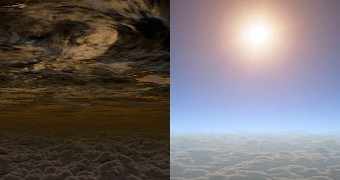A paper published in the journal Nature this past September 24 announces the discovery of steamy water vapor on a fairly small planet located outside the Solar System, at a distance of about 120 light-years from Earth.
The planet in question, dubbed HAT-P-11b, is the smallest exoplanet that has until now been documented to hold water vapor, researchers with the European Space Agency explain.
As detailed by astronomers, this planet is about the size of Neptune. It sits fairly close to its host star, which it takes about 5 days to orbit. The constellation that accommodates for HAT-P-11b and its star is named Cygnus, or The Swan.
Having studied the planet with the help of several telescopes, scientists found that it has a thick gaseous atmosphere that covers a mantle of fluid and ice. The planet's core is believed to be rocky.
Interestingly enough, researchers only managed to document the presence of steamy water vapor on the surface of HAT-P-11b because there were no thick clouds around to obscure their view.
“We set out to look at the atmosphere of HAT-P-11b without knowing if its weather would be cloudy or not. By using transmission spectroscopy, we could use Hubble to detect water vapour in the planet,” said researcher Nikku Madhusudhan.
“This told us that the planet didn't have thick clouds blocking the view and is a very hopeful sign that we can find and analyse more cloudless, smaller, planets in the future. It is groundbreaking!” the scientist added.

 14 DAY TRIAL //
14 DAY TRIAL //